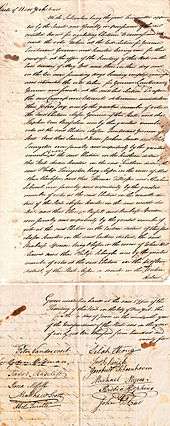Governor of New York
The Governor of the State of New York is the chief executive of the U.S. state of New York. The governor is the head of the executive branch of New York's state government and the commander-in-chief of the state's military and naval forces.
The current governor is Andrew Cuomo, a Democrat. Cuomo won the November 2010 gubernatorial election and was sworn in as the 56th governor of the state of New York on January 1, 2011. Cuomo was re-elected on November 5, 2014, defeating his Republican challenger Robert Astorino.
Powers and duties

The governor has a duty to enforce state laws, and the power to either approve or veto bills passed by the New York State Legislature, to convene the legislature, and to grant pardons, except in cases of treason and impeachment.[A] Unlike the other government departments that compose the executive branch of government, the governor is themselves head of the state Executive Department. The officeholder is afforded the courtesy style of His/Her Excellency while in office.[2]
The governor of New York is often considered a potential candidate for President. Ten governors have been major-party candidates for president, and four, Martin Van Buren, Grover Cleveland, Theodore Roosevelt, and Franklin D. Roosevelt have won. Six New York governors have gone on to serve as vice president.[3] Additionally two Governors of New York, John Jay and Charles Evans Hughes, have served as Chief Justice of the United States.
Qualifications
Under the New York State Constitution, a person must be at least 30 years of age, a United States citizen, and a resident of the state of New York for at least five years prior to being elected to serve as governor.
History
The office of Governor was established by the first New York State Constitution in 1777 to coincide with the calendar year.[F] An 1874 amendment extended the term of office back to three years,[G] but the 1894 constitution again reduced it to two years.[H] The most recent constitution of 1938 extended the term to the current four years.[I]
Line of succession
The state constitution has provided since 1777 for the election of a lieutenant governor, who also acts as president of the state senate, to the same term (keeping the same term lengths as the governor throughout all the constitutional revisions).[J] Originally, in the event of the death, resignation or impeachment of the governor, or absence from the state, the lieutenant governor would take on the governor's duties and powers.[J] Since the 1938 constitution, the lieutenant governor explicitly becomes governor upon such vacancy in the office.[K]
Should the office of lieutenant governor become vacant, the president pro tempore of the state senate[4] performs the duties of a lieutenant governor until the governor can take back the duties of the office, or the next election; likewise, should both offices become vacant, the president pro tempore acts as governor, with the office of lieutenant governor remaining vacant. Although no provision exists in the constitution for it, precedent set in 2009 allows the governor to appoint a lieutenant governor should a vacancy occur.[5] Should the president pro tempore be unable to fulfill the duties, the speaker of the assembly is next in the line of succession.[L] The lieutenant governor is elected on the same ticket as the governor, but nominated separately.[M]
Line of succession in full
- Lieutenant Governor
- Temporary President of the Senate
- Speaker of the Assembly
- Attorney General
- Comptroller
- Commissioner of Transportation
- Commissioner of Health
- Commissioner of Commerce
- Industrial Commissioner
- Chairman of the Public Service Commission
- Secretary of State[6]
List of Governors
See also
References
- ↑ "CSG Releases 2013 Governor Salaries". The Council of State Governments. June 25, 2013. Retrieved November 23, 2014.
- ↑ New York Chamber of Commerce (1899). Annual banquet of the Chamber of Commerce of the State of New York. Addresses made on the occasion. 131. p. 23. Retrieved May 18, 2015.
- ↑ Edward V. Schneier, John Brian Murtaugh, and Antoinette Pole, New York Politics: A Tale of Two States (2nd edition) (2010)
- ↑ The state constitutions refer to this position as the "temporary president of the senate"
- ↑ Peters, Jeremy W.; Chan, Sewell (September 22, 2009). "In 4-3 Vote, Court Says Paterson Can Appoint Lt. Governor". The New York Times. Retrieved September 22, 2009.
- ↑ http://law.justia.com/codes/new-york/2012/dea



